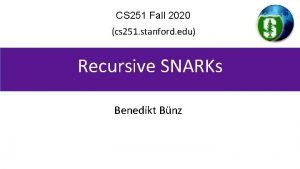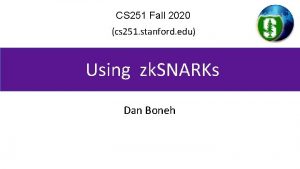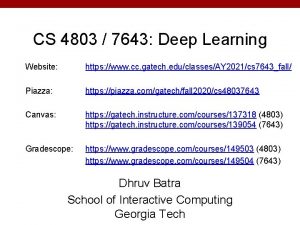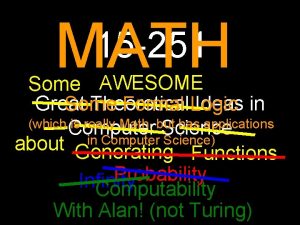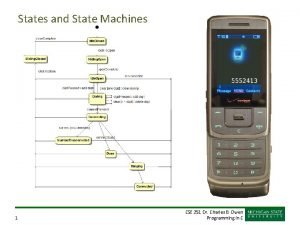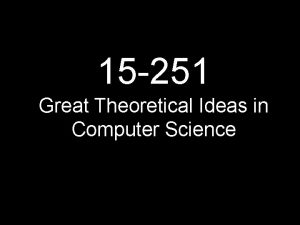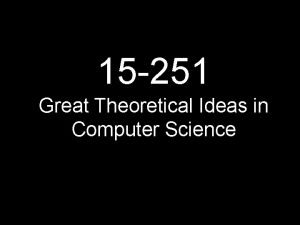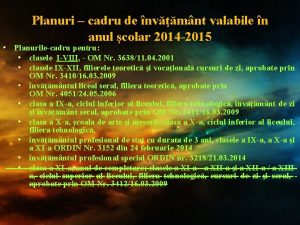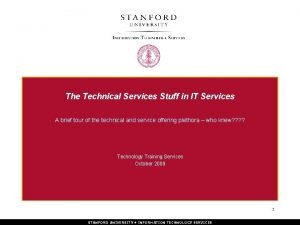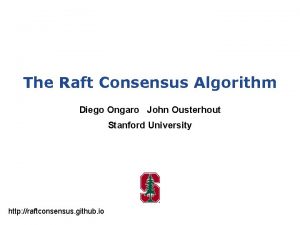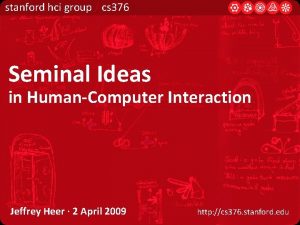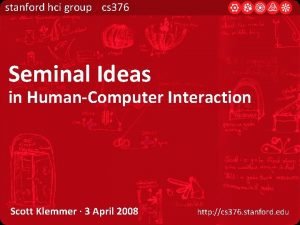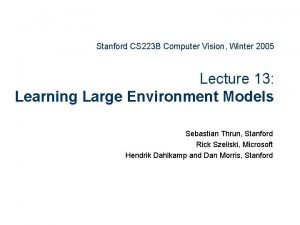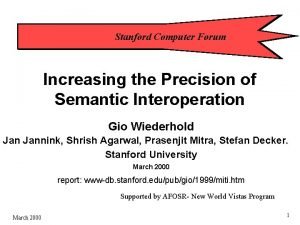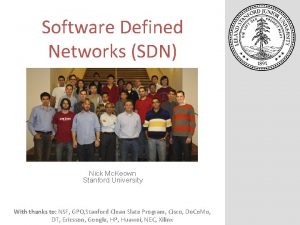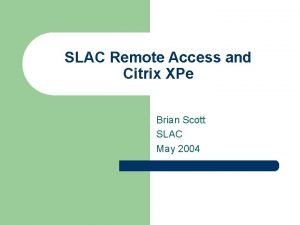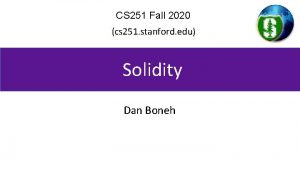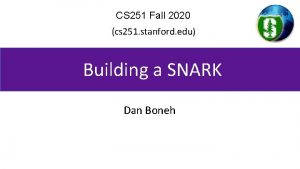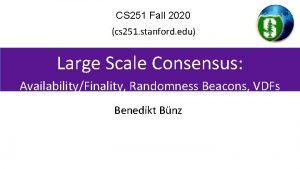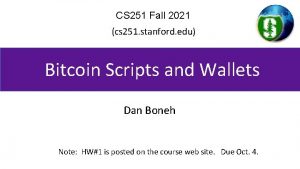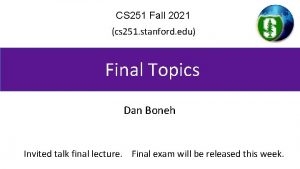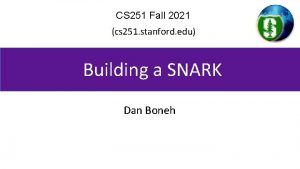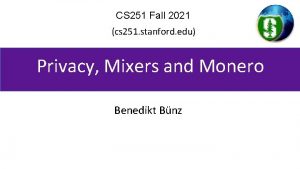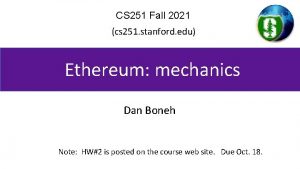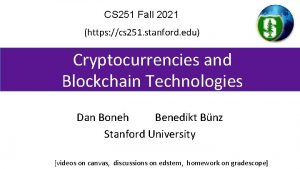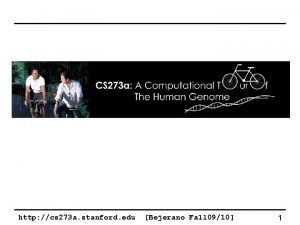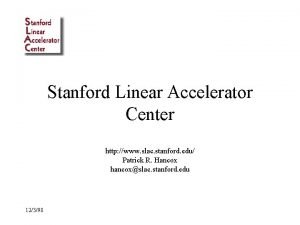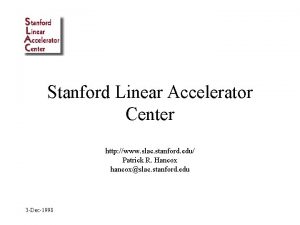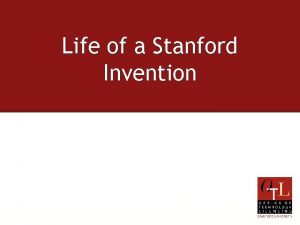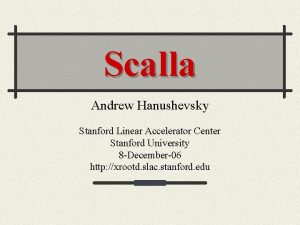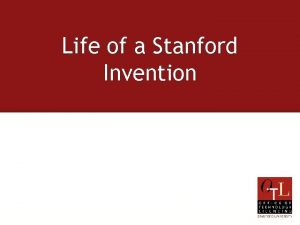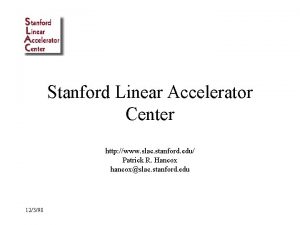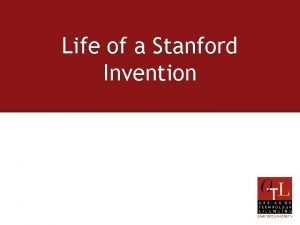CS 251 Fall 2020 cs 251 stanford edu















![Tx structure (non-coinbase) inputs input[0] input[1] input[2] outputs output[0] output[1] (segwit) witnesses input: Tx. Tx structure (non-coinbase) inputs input[0] input[1] input[2] outputs output[0] output[1] (segwit) witnesses input: Tx.](https://slidetodoc.com/presentation_image_h2/5ad5cc7c5bb086023b925a6f1e32dd59/image-16.jpg)
![Example Tx. In[0] Tx 1: (funding Tx) Tx. Out[0] 2 Script. PK input value Example Tx. In[0] Tx 1: (funding Tx) Tx. Out[0] 2 Script. PK input value](https://slidetodoc.com/presentation_image_h2/5ad5cc7c5bb086023b925a6f1e32dd59/image-17.jpg)
![Example Tx. In[0] Tx 1: (funding Tx) Tx. Out[0] 2 Script. PK input UTXO Example Tx. In[0] Tx 1: (funding Tx) Tx. Out[0] 2 Script. PK input UTXO](https://slidetodoc.com/presentation_image_h2/5ad5cc7c5bb086023b925a6f1e32dd59/image-18.jpg)



![Focusing on Tx 2: Tx. Inp[0] from UTXO (Bitcoin script) from Tx. Inp[0] Focusing on Tx 2: Tx. Inp[0] from UTXO (Bitcoin script) from Tx. Inp[0]](https://slidetodoc.com/presentation_image_h2/5ad5cc7c5bb086023b925a6f1e32dd59/image-22.jpg)













- Slides: 35

CS 251 Fall 2020 (cs 251. stanford. edu) Bitcoin Mechanics Dan Boneh Note: HW#1 is posted on the course web site. Due Sep. 28.

Recap •

Recap (2) Digital signatures: (Gen, Sign, Verify) Gen() �(pk, sk), Sign(sk, m) �σ, signing key Verify(pk, m, σ) �accept/reject verification key

This lecture: Bitcoin mechanics Total market value: Oct. 2008: paper by Satoshi Nakamoto Jan. 2009: Bitcoin network launched Sep. 2020: $200 B

This lecture: Bitcoin mechanics Layer 3: user facing tools (cloud servers) Layer 2: applications (DAPPs, smart contracts) Layer 1. 5: compute layer (blockchain computer) Layer 1: consensus layer next week

First: overview of the Bitcoin consensus layer end users signed Tx Bitcoin P 2 P network sk. A sk. B sk. C typically, miners are connected to eight other peers (anyone can join)

First: overview of the Bitcoin consensus layer miners broadcast received Tx to the P 2 P network mempool every miner: validates received Tx and stores them in its mempool (unconfirmed Tx) note: miners see Tx before they are posted on chain Bitcoin P 2 P network

First: overview of the Bitcoin consensus layer blockchain Every 10 minutes: • Each miner creates a candidate block from Tx in its mempool • a “random” miner is selected (how: next week), and broadcasts its block to P 2 P network • all miners validate new block I am the leader Bitcoin P 2 P network

First: overview of the Bitcoin consensus layer blockchain Selected miner is paid 6. 25 BTC in coinbase Tx (first Tx in the block) • only way new BTC is created • block reward halves every four years ⇒ max 21 M BTC (currently 18. 5 M BTC) note: miner chooses order of Tx in block 6. 25 BTC

Properties (very informal) Next week: Persistence: • to remove a block, need to convince 51% of mining power * Liveness: • to block a Tx from being posted, need to convince 51% of mining power **

Bitcoin blockchain: a sequence of block headers, 80 bytes each genesis block H version prev time bits nonce Tx root (4 bytes) H (32 bytes) (4 bytes) (32 bytes) 80 bytes coinbase Tx BH 3 BH 2 BH 1 coinbase Tx prev H prev … Tx root

Bitcoin blockchain: a sequence of block headers, 80 bytes each time: time miner assembled the block. Self reported. (block rejected if too far in past or future) bits: proof of work difficulty nonce: proof of work solution for choosing a leader (next week) Merkle tree: payer can give a short proof that Tx is in the block new block every ≈10 minutes.

An example (Sep. 2020) Tx data #Tx 1855 2826 1128 2774 2075 2622

Block 648493 (from coinbase Tx) (D) (adjusts every two weeks)

This lecture View the blockchain as a sequence of Tx (append-only) … coinbase Tx
![Tx structure noncoinbase inputs input0 input1 input2 outputs output0 output1 segwit witnesses input Tx Tx structure (non-coinbase) inputs input[0] input[1] input[2] outputs output[0] output[1] (segwit) witnesses input: Tx.](https://slidetodoc.com/presentation_image_h2/5ad5cc7c5bb086023b925a6f1e32dd59/image-16.jpg)
Tx structure (non-coinbase) inputs input[0] input[1] input[2] outputs output[0] output[1] (segwit) witnesses input: Tx. ID = H(Tx) (excluding witnesses) output: (4 bytes) locktime earliest block # that can include Tx Tx. ID out-index Script. Sig seq 32 byte hash value Script. PK 8 bytes 4 byte index program ignore program value = #BTC/108 [10 -8, …, 237]
![Example Tx In0 Tx 1 funding Tx Tx Out0 2 Script PK input value Example Tx. In[0] Tx 1: (funding Tx) Tx. Out[0] 2 Script. PK input value](https://slidetodoc.com/presentation_image_h2/5ad5cc7c5bb086023b925a6f1e32dd59/image-17.jpg)
Example Tx. In[0] Tx 1: (funding Tx) Tx. Out[0] 2 Script. PK input value UTXO 1 Tx. Out[1] 5 Script. PK value null locktime 0 UTXO 2 UTXO: unspent Tx output Tx 2: (spending Tx) Tx. ID Tx. In[0] 1 Script. Sig identifies a UTXO Tx. Out[0] Tx. Out[1] output UTXO 3 UTXO 4 0
![Example Tx In0 Tx 1 funding Tx Tx Out0 2 Script PK input UTXO Example Tx. In[0] Tx 1: (funding Tx) Tx. Out[0] 2 Script. PK input UTXO](https://slidetodoc.com/presentation_image_h2/5ad5cc7c5bb086023b925a6f1e32dd59/image-18.jpg)
Example Tx. In[0] Tx 1: (funding Tx) Tx. Out[0] 2 Script. PK input UTXO 1 UTXO: unspent Tx output Tx 2: (spending Tx) Tx. ID Tx. In[0] 1 Script. Sig identifies a UTXO ☓ Tx. Out[1] 5 Script. PK null locktime 0 UTXO 2 Tx. Out[0] Tx. Out[1] output UTXO 3 UTXO 4 0

Validating Tx 2 program from funding Tx: under what conditions can UTXO be spent Miners check (for each input): 1. The program Script. Sig | Script. PK returns true 2. Tx. ID | index is in the current UTXO set 3. sum input values ≥ sum output values After Tx 2 is posted, miners remove UTXO 2 from UTXO set

An example (block 648493) Tx 0 input Tx 1 outputs Tx 2 sum of fees in block added to coinbase Tx [2826 Tx]

Tx fees Bitcoin average Tx fees in USD Ethereum average Tx fees in USD
![Focusing on Tx 2 Tx Inp0 from UTXO Bitcoin script from Tx Inp0 Focusing on Tx 2: Tx. Inp[0] from UTXO (Bitcoin script) from Tx. Inp[0]](https://slidetodoc.com/presentation_image_h2/5ad5cc7c5bb086023b925a6f1e32dd59/image-22.jpg)
Focusing on Tx 2: Tx. Inp[0] from UTXO (Bitcoin script) from Tx. Inp[0]

All value in Bitcoin is held in UTXOs Sep. 2020: miners need to store ≈70 M UTXOs in memory

Bitcoin Script A stack machine. Not Turing Complete: no loops. Quick survey of op codes: 1. OP_TRUE (OP_1), OP_2, …, OP_16: push value onto stack 81 82 96 2. OP_DUP: push top of stack onto stack 118

Bitcoin Script 3. control: 99 OP_IF <statements> OP_ELSE <statements> OP_ENDIF 105 OP_VERIFY: abort fail if top = false 106 OP_RETURN: abort and fail what is this for? Script. PK = [OP_RETURN, <data>] 136 OP_EQVERIFY: pop, abort fail if not equal

Bitcoin Script 4. arithmetic: OP_ADD, OP_SUB, OP_AND, …: pop two items, add, push 5. crypto: OP_SHA 256: pop, hash, push OP_CHECKSIG: pop sig, pop pk, verify sig. on Tx, push 0 or 1 6. Time: OP_Check. Lock. Time. Verify (CLTV): fail if value at the top of stack > Tx locktime value. usage: UTXO can specify min-time when it can be spent

Example: a common script <sig> <pk> DUP HASH 256 <pkhash> EQVERIFY CHECKSIG stack: empty <sig> <pk> <sig> <pk> <hash> <pkhash> <sig> <pk> 1 ⇒ successful termination init push values DUP HASH 256 push value EQVERIFY CHECKSIG verify(pk, Tx, sig)

Transaction types: (1) P 2 PKH pay to public key hash Alice want to pay Bob 5 BTC: • step 1: Bob generates sig key pair (pk. B, sk. B) �Gen() • step 2: Bob computes his Bitcoin address as Addr. B �H(pk. B) • step 3: Bob sends Addr. B to Alice • step 4: Alice creates Tx: input 7 BTC Script. PKB: 5 Script. PKB UTXOB for Bob 2 Script. PKA 0 UTXOA for Alice (change) DUP HASH 256 <Addr. B> EQVERIFY CHECKSIG

Transaction types: (1) P 2 PKH Later, when Bob wants to spend his UTXO: Txspend: Tx. ID 0 points to UTXOB Script. Sig. B: output create a Txspend output 0 <sig> <pk. B> <sig> = Sign(sk. B, Tx) where Tx = (Txspend excluding all Script. Sigs) (SIGHASH_ALL) Miners validate that Script. Sig. B | Script. PKB returns true

P 2 PKH: comments • Alice specifies recipient’s pk in UTXOB • Recipient’s pk is not revealed until UTXO is spent (some security against attacks on pk) • Miner cannot change <Addr. B> and steal funds: invalidates the signature that created the UTXOB

Segregated Witness ECDSA malleability: • given (m, sig) anyone can create (m, sig’) with sig ≠ sig’ ⇒ miner can change sig in Tx and change Tx. ID = SHA 256(Tx) ⇒ Tx issuer cannot tell what Tx. ID is, until Tx is posted ⇒ leads to problems and attacks Segregated witness: signature is moved to witness field in Tx Tx. ID = Hash(Tx without witnesses)

Transaction types: (2) P 2 SH: pay to script hash (pre Seg. Wit in 2017) Let’s payer specify a redeem script (instead of just pkhash) Usage: payee publishes hash(redeem script) �Bitcoint addr. payer sends funds to that address Script. PK in UTXO: HASH 160 <H(redeem script)> EQUAL Script. Sig to spend: <sig 1> <sig 2> … <sign> <redeem script> payer can specify complex conditions for when UTXO can be spent

P 2 SH Miner verifies: (1) <Script. Sig> Script. PK = true �payee gave correct script (2) Script. Sig = true �script is satisfied

Example P 2 SH: multisig Goal: spending a UTXO requires t-out-of-n signatures Redeem script for 2 -out-of-3: (set by payer) <2> <PK 1> <PK 2> <PK 3> <3> CHECKMULTISIG hash gives P 2 SH address Script. Sig to spend: (by payee) <0> <sig 1> <sig 3> <redeem script>

END OF LECTURE Next lecture: interesting scripts, wallets, and how to manage crypto assets
 Stanford cs251
Stanford cs251 Cs251 stanford
Cs251 stanford Cs251
Cs251 Highwire stanford edu
Highwire stanford edu Cs 4803
Cs 4803 Task level parallelism
Task level parallelism Cs61c fall 2020
Cs61c fall 2020 Edu.sharif.edu
Edu.sharif.edu 15-251
15-251 A vida tem tristezas mil letra
A vida tem tristezas mil letra Me 251
Me 251 Legge 251 2000
Legge 251 2000 Aecp program army
Aecp program army Aae 251 purdue
Aae 251 purdue Cse251
Cse251 15-251
15-251 Great theoretical ideas in computer science
Great theoretical ideas in computer science Edu.ro programe scolare 2020-2021
Edu.ro programe scolare 2020-2021 Web security stanford
Web security stanford Smartmart stanford
Smartmart stanford Stanford prison experiment research design
Stanford prison experiment research design Diego ongaro stanford
Diego ongaro stanford Ndo stanford
Ndo stanford Stanford research park map
Stanford research park map Stanford hci group
Stanford hci group Mit csail hci course review
Mit csail hci course review Cs 147 stanford
Cs 147 stanford Matlab stanford
Matlab stanford Cs223 stanford
Cs223 stanford Glossarize
Glossarize Stanford genome technology center
Stanford genome technology center Sat-10 kindergarten
Sat-10 kindergarten Sat-10 kindergarten
Sat-10 kindergarten Stanford torus space station
Stanford torus space station Sdn stanford
Sdn stanford Stanford citrix
Stanford citrix
